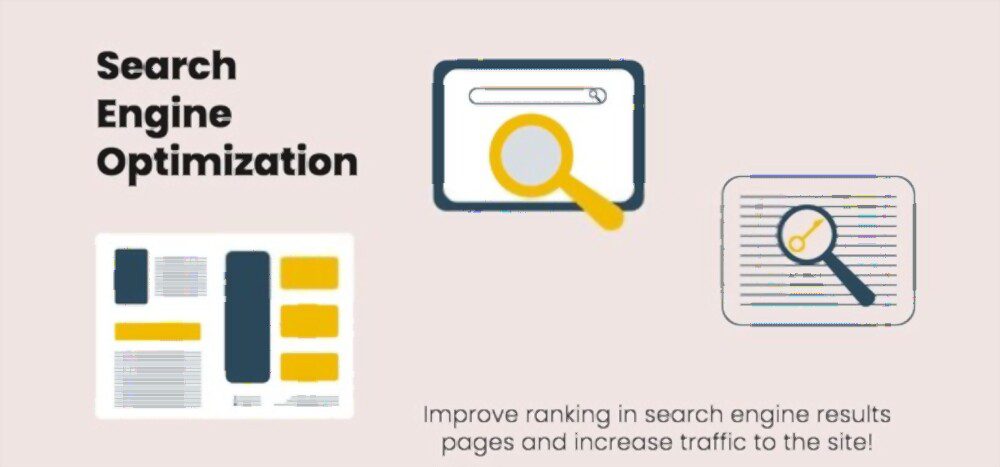No matter how great your website content is, if your site’s SEO isn’t up to snuff, you’re not going to get the traffic and conversions you need contact SEO services in Dublin. Luckily, there are a few quick fixes you can make to boost your site’s performance. Here are 10 of them.
Optimize Your Site For Search Engines
When it comes to optimizing your website for search engines, there are a few key things to keep in mind. First and foremost, make sure your site is filled with rich, relevant content that will help you rank higher in search engine results pages (SERPs). Additionally, use keyword-rich titles and descriptions for your pages, and make sure your site is easy to navigate. Finally, submit your site to popular search engines and directories, and be sure to keep it updated with the latest news and information.
Add Keywords To Your Site’s Metadata
Adding keywords to your website’s metadata can help improve your site’s ranking in search engine results pages (SERPs). By including keywords that are relevant to your site’s content, you can help Google and other search engines better understand what your site is about and return it as a result for relevant queries.
There are a number of ways to add keywords to your site’s metadata, including through your site’s <head> tag, in the <meta> tag, and in the <title> tag. The most important thing is to make sure the keywords you choose are relevant to your site’s content.
If you’re not sure which keywords to use, you can use a tool like Google AdWords Keyword Planner to find keywords that are relevant to your site and that have a high search volume. You can also use Google Trends to see how popular a particular keyword is over time.
Improve Your Site’s Loading Time
There are many things you can do to improve your site’s loading time. One of the most effective is to use a content delivery network (CDN). A CDN will store a copy of your site’s files on servers around the world so that users can access them faster.
Another way to improve loading time is to optimize your images. You can do this by reducing their file size, using the correct file format, and choosing the right dimensions.
You can also optimize your code and scripts to reduce their size and improve performance. Finally, you can use caching to store static versions of your pages and assets, so that they don’t need to be downloaded every time someone visits your site.
Increase The Number Of Backlinks To Your Site
There are a number of ways to increase the number of backlinks to your site, and all of them require some effort on your part. The first step is to identify relevant websites in your industry and make a list of them. Once you have that list, you can start reaching out to those websites and asking for a link to your site.
You can also participate in online forums and discussion groups related to your industry, and include a link to your website in your signature. Additionally, you can submit articles and blog posts to popular websites and include a link to your website in the author bio.
Finally, you can use social media to promote your website. Share your website’s link on your social media profiles, and ask your friends and followers to share it as well. By using all of these methods, you can increase the number of backlinks to your website and improve your search engine rankings.
Publish High-Quality Content
It is essential to publish high-quality content if you want to attract and keep readers. This means producing well-written and well-researched articles that are both informative and engaging. It also means making sure that your website is easy to navigate and that your posts are properly formatted.
Quality content is not only essential for attracting and keeping readers, it is also essential for ranking high in search engine results pages. By publishing high-quality content, you can improve your website’s SEO and attract more visitors.
Optimize Your Images
Images can make or break a website. Not only do they provide visual interest, but they can also help to improve your website’s SEO. By optimizing your images, you can make sure that they are the correct size and format, and that they are properly tagged with relevant keywords.
When you are adding images to your website, be sure to keep the following tips in mind:
-Choose the right file format. JPEG is a good choice for photos, while PNG is a good choice for graphics and logos.
-Keep the file size as small as possible. Large files will take longer to load and may slow down your website.
-Include keywords in the file name and the alt text. This will help improve your website’s SEO.
-Make sure the images are cropped and sized correctly. If they are not, they may look distorted when displayed on your website.
By following these tips, you can ensure that your website’s images are both attractive and SEO-friendly.
Use Social Media To Promote Your Content
You can use social media to great effect to promote your content. Platforms like Twitter and Facebook can help you to reach a wider audience with your content. Make sure to post links to your content regularly, and use effective hashtags to help it to reach a wider audience. You can also use social media to build relationships with other bloggers and content creators. This can help you to develop a wider audience for your content.
Monitor Your Site’s Performance
Make sure you are regularly monitoring your website’s performance. This includes checking your site’s uptime, response time, and visitor engagement. If you find that your site is not performing well, take steps to correct the issue. This may include optimizing your site’s code, increasing your server’s resources, or making changes to your hosting plan.
Use Seo Tools To Help You Optimise Your Site
There are a number of SEO tools that you can use to help optimize your website. Some of the most popular tools include Google Analytics, Moz, and SEMrush.
Google Analytics is a free tool that you can use to track your website traffic. It provides you with data on where your website traffic is coming from, what pages are being visited, and how long people are staying on your site. This information can help you identify which pages are the most popular and which ones need improvement.
Moz is a paid tool that provides you with a variety of SEO analytics, including website ranking, backlinks, and keyword research. It also offers a free MozBar extension that you can use to analyze the SEO of any website.
SEMrush is a paid tool that provides you with detailed information on your website’s competitors. It can help you identify what keywords your competitors are targeting and what strategies they are using to rank higher than you.
Keep Your Seo Techniques Up-To-Date
Keeping your SEO techniques up-to-date is critical if you want your website to rank well in search engines. The algorithms that search engines use are constantly changing, so it’s important to stay ahead of the curve and keep your website optimized.
There are a number of things you can do to keep your SEO techniques up-to-date. First, make sure you are familiar with the latest changes to the algorithms used by search engines. Also, keep track of the latest trends in SEO and make sure your website is optimized for those trends. You can also use tools like Google’s PageSpeed Insights to help you optimize your website.
If you stay on top of the latest SEO techniques and keep your website optimized visit Perfect Digitals, you’ll be sure to see improved rankings in search engines.
If you’re looking to give your site’s SEO a quick boost, make sure to try out these 10 tips. By following them, you’ll see a noticeable improvement in your site’s performance.





